 "ttyymmnn" (ttyymmnn)
"ttyymmnn" (ttyymmnn)
07/24/2018 at 12:35 • Filed to: wingspan, Planelopnik, TDIAH
 6
6
 9
9
 "ttyymmnn" (ttyymmnn)
"ttyymmnn" (ttyymmnn)
07/24/2018 at 12:35 • Filed to: wingspan, Planelopnik, TDIAH |  6 6
|  9 9 |
!!! UNKNOWN CONTENT TYPE !!!
Welcome to
This Date in Aviation History
, getting of you caught up on milestones, important historical events and people in aviation from July 21 through July 24.
!!! UNKNOWN CONTENT TYPE !!!
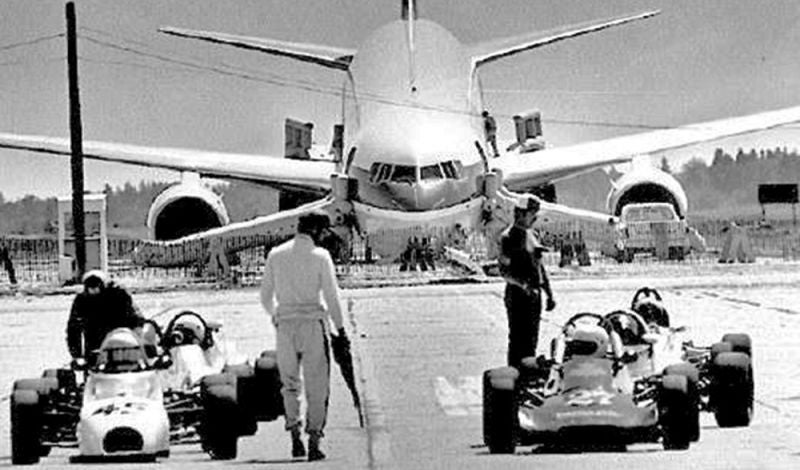
(Wayne Glowacki/Winnipeg Free Press)
July 23, 1983 – Air Canada Flight 143, known as the Gimli Glider, runs out of fuel over Manitoba. When driving a car, most people rarely give the fuel gauge more than a passing glance, and rely on a warning light to alert them when the level is low. And unless you’re driving across the desert, you can pull over at any convenient gas station and top up. Driving across the country requires a bit more attention, as gas stations can be spaced farther apart, and perhaps even a little bit of math might be involved to figure out if there’s enough fuel to reach the next town or if you need to fill up now. And even then, running out of gas on the road is generally more of an inconvenience than a life-and-death situation. But calculating the amount of fuel to put in a transcontinental airliner is a much more involved task, and one that actually could be a matter of life or death. The aircrew must make calculations for the weight of the aircraft at takeoff, taxiing time, the distance and altitude of the flight, the rate at which the fuel burns off, and they must make sure that there is enough fuel in reserve to divert to another airport. The vast majority of the time, the pilots get it right, and with fuel to spare. But in the case of Air Canada Flight 143, which came to be known as the Gimli Glider, the pilots got it completely wrong.
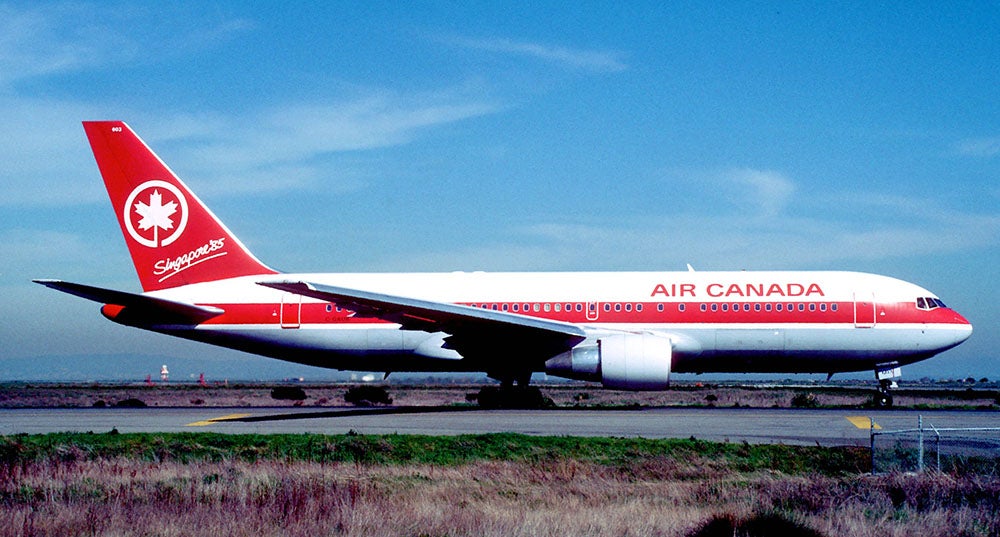 !!!CAPTION ERROR: MAY BE MULTI-LINE OR CONTAIN LINK!!!
!!!CAPTION ERROR: MAY BE MULTI-LINE OR CONTAIN LINK!!!
Air Canada Flight 143 was a scheduled flight from Montreal to Edmonton when, at 41,000 feet, pilots Captain Robert Pearson and First Office Maurice Quintal were alerted to fuel pressure problem onboard their !!!error: Indecipherable SUB-paragraph formatting!!! (C-GAUN). Due to an electronic fault, the airliner’s fuel gauges weren’t working, but the pilots assumed that they had plenty of fuel based on the calculations they had made on the ground before the flight. In reality, they took off with half the amount of fuel necessary to reach their destination. Soon after the alarm, both engines quit, the 767 lost all power and the majority of the instrument panels went dark. The pilots found themselves at the controls of world’s largest glider, a situation for which neither of them had ever trained.
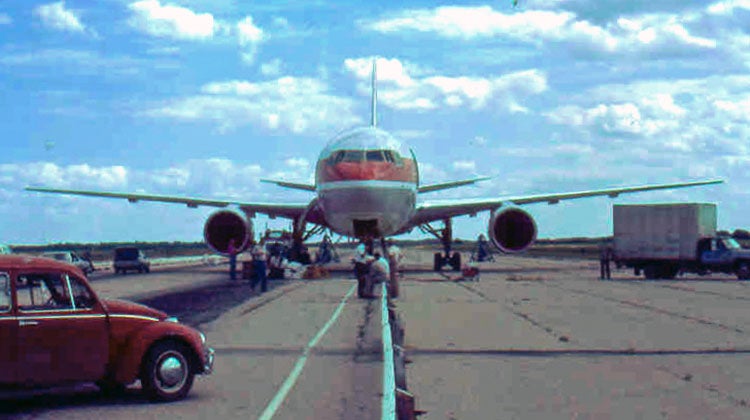 !!!CAPTION ERROR: MAY BE MULTI-LINE OR CONTAIN LINK!!!
!!!CAPTION ERROR: MAY BE MULTI-LINE OR CONTAIN LINK!!!
With the aid of ground controllers, the crew determined that their best option would be an emergency landing at !!!error: Indecipherable SUB-paragraph formatting!!! , a former Royal Canadian Air Force air station. However, though the runways were still mostly intact, the station was no longer active, and much of it had been turned into an industrial park and racetrack. And there was a race being held on the track at the time. The pilots performed a gravity drop of the landing gear, but the nose wheel failed to lock and, despite having no hydraulic power and limited electricity generated by an external turbine, the pilots still managed to land safely. A small fire in the nose of the aircraft was extinguished by race safety personnel at the scene, and all passengers and crew exited the plane safely, though some passengers were injured when the safety slides at the rear of the craft weren’t long enough to reach the ground due to the collapsed nose gear.
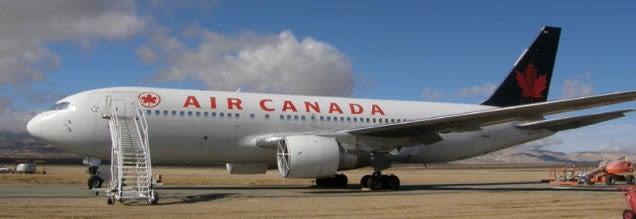 !!!CAPTION ERROR: MAY BE MULTI-LINE OR CONTAIN LINK!!!
!!!CAPTION ERROR: MAY BE MULTI-LINE OR CONTAIN LINK!!!
Investigators discovered that the fuel exhaustion was caused by a combination of miscommunication between the cockpit crew and maintenance personnel, fuel gauges that were disconnected or not functioning properly, and fuel calculations that had been made in pounds instead of kilograms, a result Canada’s ongoing transition from the Imperial to the metric system. For their part in the incorrect fuel calculation, Captain Pearson and FO Quintal were initially found to be partially at fault for the incident. Pearson was demoted for six months, and Quintal was suspended for two weeks. Maintenance personnel were also suspended. Despite these punitive measures, the flight crew was awarded the first ever !!!error: Indecipherable SUB-paragraph formatting!!! Diploma for Outstanding Airmanship in 1985, and FO Quintal was eventually promoted to captain. The Gimli Glider was repaired and returned to service, and took its final flight on January 24, 2008, after which it was retired to storage in the Mojave Desert. When no buyers came forward to purchase the 767, it was dismantled, and aluminum from the plane was turned into souvenir keychains.
!!! UNKNOWN CONTENT TYPE !!!
Short Takeoff
!!! UNKNOWN CONTENT TYPE !!!
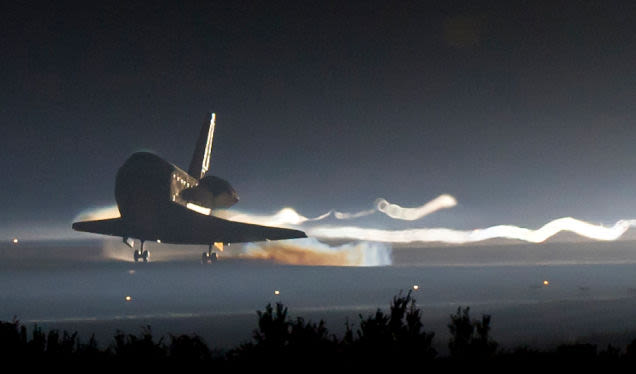
(NASA)
July 21, 2011 – The Shuttle Atlantis lands in Florida after mission STS-135, marking the final mission of the Space Shuttle Program. The !!!error: Indecipherable SUB-paragraph formatting!!! was announced during the Nixon Administration as a reusable spacecraft to help reduce the cost of going to space. The first Shuttle, !!!error: Indecipherable SUB-paragraph formatting!!! , was used for testing and never went to space. NASA built five operational orbiters, !!!error: Indecipherable SUB-paragraph formatting!!! , !!!error: Indecipherable SUB-paragraph formatting!!! , !!!error: Indecipherable SUB-paragraph formatting!!! , !!!error: Indecipherable SUB-paragraph formatting!!! , and !!!error: Indecipherable SUB-paragraph formatting!!! , and Columbia launched on the first mission to orbit, !!!error: Indecipherable SUB-paragraph formatting!!! , on April 12, 1981. Over the course of 135 missions spanning 30 years, the Shuttle fleet transported over 3.5 million pounds of cargo into space and completed 20,830 orbits. Shuttle astronauts also deployed 180 satellites and components for the construction of the !!!error: Indecipherable SUB-paragraph formatting!!! (ISS). Two Shuttles, Challenger and Columbia , were lost to accidents that claimed the life of 14 astronauts. The remaining Shuttles were distributed to aviation museums around the country.
!!! UNKNOWN CONTENT TYPE !!!
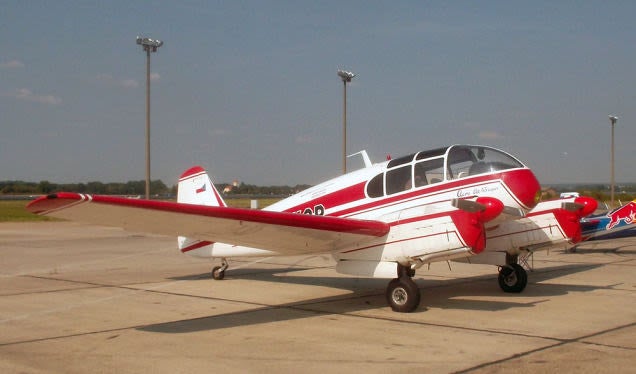 !!!CAPTION ERROR: MAY BE MULTI-LINE OR CONTAIN LINK!!!
!!!CAPTION ERROR: MAY BE MULTI-LINE OR CONTAIN LINK!!!
July 21, 1947 – The first flight of the Aero Ae-45,
a twin engine civil utility aircraft and the first aircraft to be produced by Czechoslovakia following WWII. The Ae 45 was powered by a pair of
!!!error: Indecipherable SUB-paragraph formatting!!!
air-cooled 4-cylinder engines, and could carry one pilot with up to four passengers at a cruising speed of 155 mph. The Ae 45 proved to be very popular, and was widely exported to Eastern Bloc countries and allies of the Soviet Union, as well as Italy and Switzerland. Nearly 600 were produced from 1951-1963.
!!! UNKNOWN CONTENT TYPE !!!
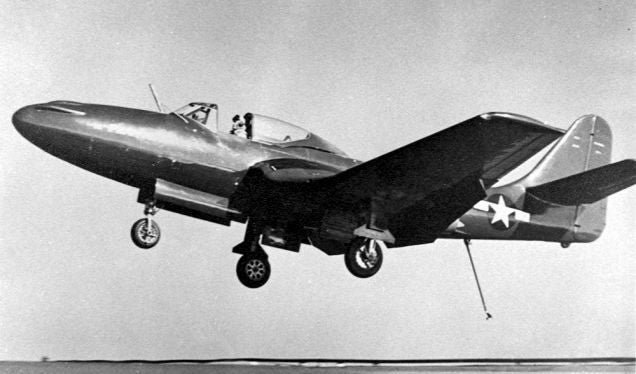
(US Navy)
July 21, 1946 – The first landing by a purely jet-powered aircraft aboard an American aircraft carrier.
Though the unfortunately named
!!!error: Indecipherable SUB-paragraph formatting!!!
mixed propulsion fighter actually made the first jet-powered carrier landing, it did so only because its radial engine had failed. The
!!!error: Indecipherable SUB-paragraph formatting!!!
, which first flew on January 26, 1945, made the first true jet-powered landing when it touched down aboard the carrier
!!!error: Indecipherable SUB-paragraph formatting!!!
(CV 42) near Norfolk, Virginia. US Navy fighter squadron
!!!error: Indecipherable SUB-paragraph formatting!!!
, flying the FH Phantom, became the US Navy’s first operational jet carrier squadron in 1948, flying from
!!!error: Indecipherable SUB-paragraph formatting!!!
!!!error: Indecipherable SUB-paragraph formatting!!!
(CVL 48).
!!! UNKNOWN CONTENT TYPE !!!
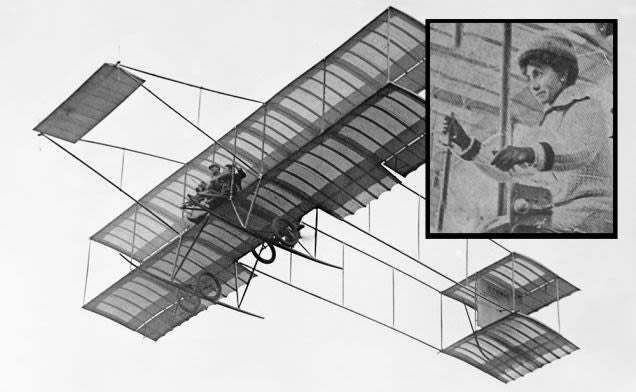
(Author unknown)
July 21, 1911 – Denise Moore becomes the first woman to die in an airplane crash. Moore’s real name was E. Jane-Wright, but she flew under a pseudonym because flying wasn’t considered a proper pastime for women and she wanted to conceal her hobby from her family. At the time of her death, Moore was learning to fly at the !!!error: Indecipherable SUB-paragraph formatting!!! aviation school at Étampes, France, and was flying one of Farman’s aircraft, most likely a !!!error: Indecipherable SUB-paragraph formatting!!! . At an altitude of 150 feet, Moore lost control of the airplane and fell to her death when the airplane inverted.
!!! UNKNOWN CONTENT TYPE !!!
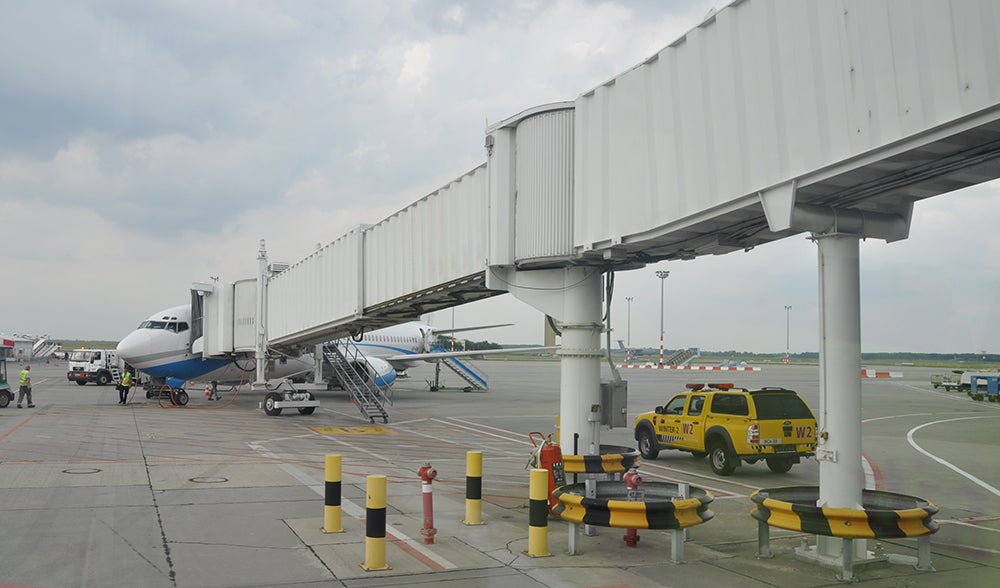 !!!CAPTION ERROR: MAY BE MULTI-LINE OR CONTAIN LINK!!!
!!!CAPTION ERROR: MAY BE MULTI-LINE OR CONTAIN LINK!!!
July 22, 1959 – The first “jetway” in the United States is installed at Hartsfield-Jackson International Airport in Atlanta.* While modern travelers are familiar with the extendable tunnel that leads passengers to their airplane, boarding an airliner in the early days of commercial aviation meant crossing the tarmac or muddy field and climbing stairs, often at the mercy of winds, rain or snow. Engineer Frank Der Yuen patented an “apparatus for facilitating the loading and unloading of passengers and cargo,” and the trademarked name jetway has now become synonymous with any passenger boarding bridge (PBB) as it is officially known. Capable of being extended, retracted, moved, raised or lowered to accommodate most any airliner, the jetway is now a fixture at most airports around the world, and provides a safe and comfortable way for air travelers to board their plane.
* The actual location of the first jetway is not certain, with some accounts placing it at either O’Hare Airport in Chicago, Los Angeles International Airport, LaGuardia Airport in New York or San Francisco International Airport.
!!! UNKNOWN CONTENT TYPE !!!
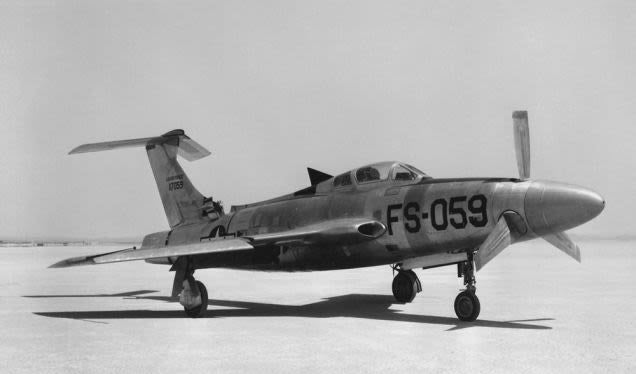
(US Air Force)
July 22, 1955 – The first flight of the Republic XF-84H “Thunderscreech,”
a development of the
!!!error: Indecipherable SUB-paragraph formatting!!!
intended to provide the US Navy with a fighter that could take off without a catapult. The XF-84H had a 5,850 hp
!!!error: Indecipherable SUB-paragraph formatting!!!
turboprop located behind the cockpit that turned a propeller in the nose through a drive shaft and which also provided thrust through its exhaust. An afterburner was fitted but never used. While the concept showed unprecedented acceleration, the aircraft took 30 minutes to warm up, and the supersonic propeller, turning at a constant Mach 1.18, caused continuous sonic booms that created a shock wave which induced acute nausea and headaches in the ground crew. The XF-84H was also one of the loudest aircraft ever produced, and its warmup could be heard 25 miles away. The test program was plagued by difficulties with control and engine reliability, and the XF-84H was cancelled in 1956 after the construction of two prototypes.
!!! UNKNOWN CONTENT TYPE !!!
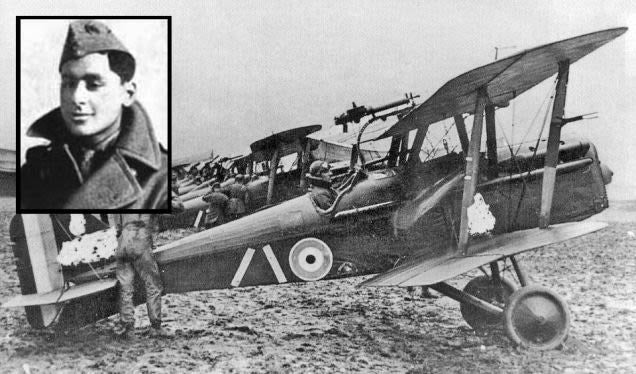
(UK Government)
July 22, 1918 – The death of Indra Lal Roy, India’s only WWI flying ace. Born on December 2, 1898 in Calcutta, British India, Roy was attending school in London when the war broke out, and he was initially rejected by the Royal Flying Corps for poor eyesight. Only after getting a second opinion was he accepted for flight duty. After recovering from injuries suffered in the crash of his !!!error: Indecipherable SUB-paragraph formatting!!! , Roy returned to service and scored 13 victories (two shared) in just two days. Roy was killed in a dog fight against a !!!error: Indecipherable SUB-paragraph formatting!!! , and was posthumously awarded the United Kingdom’s !!!error: Indecipherable SUB-paragraph formatting!!! , the first Indian to receive the honor. Roy was just 19 years old.
!!! UNKNOWN CONTENT TYPE !!!
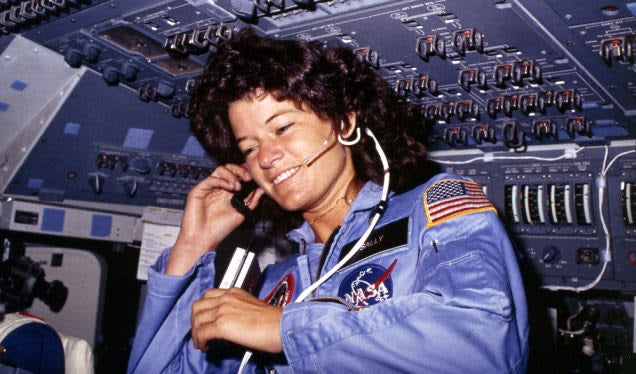
(NASA)
July 23, 2012 – The death of Sally Ride, a physicist, astronaut, and the first American woman in space. Born in Los Angeles, California on May 26, 1951, Ride joined NASA in 1978 and first went to space in 1983 as a Mission Specialist on board Space Shuttle !!!error: Indecipherable SUB-paragraph formatting!!! on mission !!!error: Indecipherable SUB-paragraph formatting!!! . With that flight, Ride became not only the first American woman in space and the first known LGBT astronaut, but, at age 32, she was also the youngest American astronaut to fly in space. Ride went to space a second time the following year, again on Challenger , as a Mission Specialist on !!!error: Indecipherable SUB-paragraph formatting!!! . Ride left NASA in 1987, but served on the investigation committees into the !!!error: Indecipherable SUB-paragraph formatting!!! and !!!error: Indecipherable SUB-paragraph formatting!!! disasters. After teaching physics at the University of California, San Diego, Ride died of pancreatic cancer at age 61.
!!! UNKNOWN CONTENT TYPE !!!
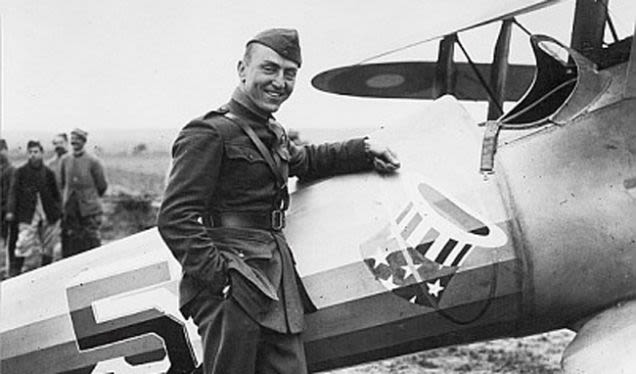
(Author unknown)
July 23, 1973 – The death of Eddie Rickenbacker.
Born on October 8, 1890 in Columbus, Ohio, Rickenbacker was America’s leading ace in WWI and a recipient of the
!!!error: Indecipherable SUB-paragraph formatting!!!
. Rickenbacker served in the
!!!error: Indecipherable SUB-paragraph formatting!!!
, nicknamed the “Hat-in-the-Ring” squadron, where he flew French-made
!!!error: Indecipherable SUB-paragraph formatting!!!
and
!!!error: Indecipherable SUB-paragraph formatting!!!
fighters and finished the war with 26 confirmed victories. Rickenbacker eventually commanded the 94th then started the short-lived
!!!error: Indecipherable SUB-paragraph formatting!!!
in 1920. Rickenbacker made his greatest contribution to aviation as the head of
!!!error: Indecipherable SUB-paragraph formatting!!!
, which he led from 1938 until his retirement in 1963. Rickenbacker died of a stroke at the age of 82.
!!! UNKNOWN CONTENT TYPE !!!
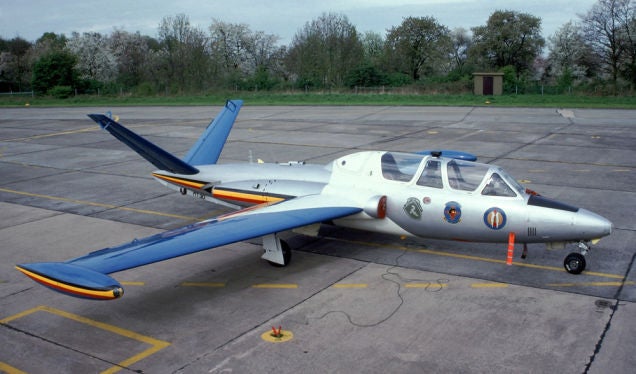 !!!CAPTION ERROR: MAY BE MULTI-LINE OR CONTAIN LINK!!!
!!!CAPTION ERROR: MAY BE MULTI-LINE OR CONTAIN LINK!!!
July 23, 1952 – The first flight of the Fouga CM.170 Magister,
a jet-powered trainer built for the French
Armée de l’Air
to replace the
!!!error: Indecipherable SUB-paragraph formatting!!!
. The world’s first purpose-built jet trainer to enter production, the Magister is a straight-wing monoplane with a distinctive V-shaped tail, a design element that Fouga borrowed from its
!!!error: Indecipherable SUB-paragraph formatting!!!
glider. Fouga also produced a naval variant for the French Navy, the CM.175 Zéphyr, which was used as the primary trainer for pilots learning carrier operations. The Magister also operated as a light attack aircraft, and could be armed with two machine guns and up to 310 pounds of external ordnance. Widely exported and also built under license by West Germany, Finland and Israel, a total of 929 CM.170s were produced.
!!! UNKNOWN CONTENT TYPE !!!
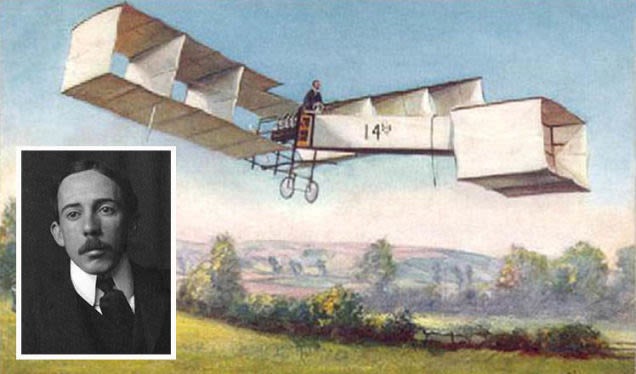
(Postcard; US Library of Congress)
July 23, 1932 – The death of Alberto Santos-Dumont,
a Brazilian aviation pioneer and one of the early inventors of aircraft in France. Born on July 20, 1873, Santos-Dumont got his start in aviation with ballooning and dirigibles, then constructed his first aircraft, the
!!!error: Indecipherable SUB-paragraph formatting!!!
, in which he made the first heavier-than-air flight in Europe in 1906. His final aircraft, the
!!!error: Indecipherable SUB-paragraph formatting!!!
monoplane, became the world’s first production airplane. A national hero in his homeland, where he is considered the “father of flight,” Santos-Dumont committed suicide by hanging himself. He was said to be depressed over his multiple sclerosis, and also upset over the use of aircraft as a weapon of war in São Paolo’s
!!!error: Indecipherable SUB-paragraph formatting!!!
. Santos-Dumont was 59 years old.
!!! UNKNOWN CONTENT TYPE !!!
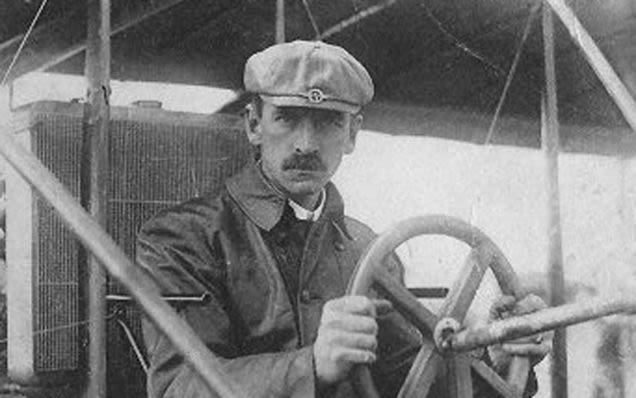
(Author unknown)
July 23, 1930 – The death of Glenn Curtiss.
Though often eclipsed in history books by the
!!!error: Indecipherable SUB-paragraph formatting!!!
, Glenn Curtiss was one of America’s greatest aviation pioneers, and has been credited with the creation of the American aviation industry. Born on May 21, 1878 in Hammondsport, New York, Curtiss’ credits include the first officially witnessed flight in North America, victory at the world’s first international air meet in France, and the first long-distance flight in the US. Curtiss also provided the US Navy with its first aircraft in 1911, the
!!!error: Indecipherable SUB-paragraph formatting!!!
, heralding the birth of US Naval Aviation. The Curtiss Airplane and Motor Company, and later Curtiss-Wright, made contributions to military aviation in both World Wars which are
!!!error: Indecipherable SUB-paragraph formatting!!!
to mention here, but some of the most important aircraft built by him or his company include the
!!!error: Indecipherable SUB-paragraph formatting!!!
biplane, the
!!!error: Indecipherable SUB-paragraph formatting!!!
and
!!!error: Indecipherable SUB-paragraph formatting!!!
, the
!!!error: Indecipherable SUB-paragraph formatting!!!
, and the
!!!error: Indecipherable SUB-paragraph formatting!!!
.
!!! UNKNOWN CONTENT TYPE !!!
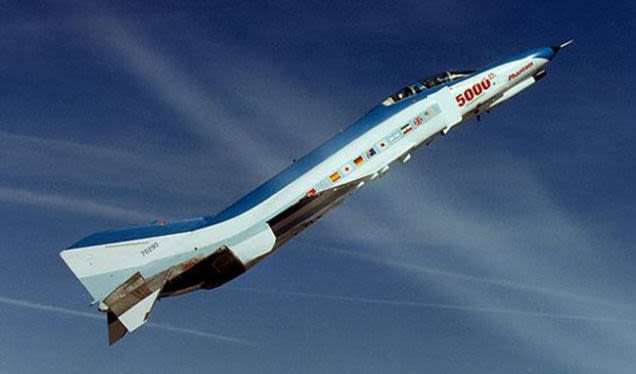
(Author unknown)
July 24, 1978 – McDonnell Douglas completes the 5,000th F-4 Phantom II. One of the iconic aircraft of the Cold War Era, the !!!error: Indecipherable SUB-paragraph formatting!!! entered service in 1960 with the US Navy and eventually became one of the few fighters to serve in the Navy, US Marine Corps and US Air Force. Production of the two-seat all-weather interceptor/fighter-bomber began in 1958 and, by the time production ended in 1981, a total of 5,195 were built to serve the US military and 11 export nations. The F-4G !!!error: Indecipherable SUB-paragraph formatting!!! electronic warfare variant served as late as 1991 in the !!!error: Indecipherable SUB-paragraph formatting!!! and, following the Phantom’s retirement from US service in 1996, remaining F-4s were converted to QF-4 target drones.
!!! UNKNOWN CONTENT TYPE !!!
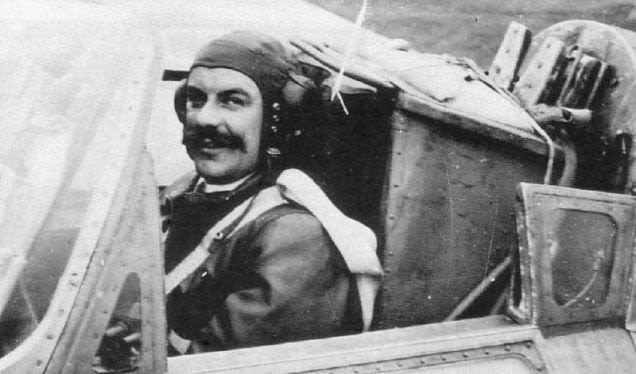
(Author unknown)
July 24, 1946 – Bernard Lynch becomes the first person to be ejected from an airplane. When !!!error: Indecipherable SUB-paragraph formatting!!! died in an aviation accident in 1942, it spurred his business parter !!!error: Indecipherable SUB-paragraph formatting!!! to begin work on the first production ejection seat. In 1944, the RAF Air Staff approached Martin to develop an escape system for their new jet-powered fighters. Martin designed a seat that was launched out of the aircraft using an explosive charge and, after numerous tests on the ground over the course of a year, Lynch, a !!!error: Indecipherable SUB-paragraph formatting!!! employee, was successfully ejected from a !!!error: Indecipherable SUB-paragraph formatting!!! flying at 8,000 ft. Fortunately for Lynch, the seat performed flawlessly, and Martin-Baker continues making ejection seats to this day.
!!! UNKNOWN CONTENT TYPE !!!
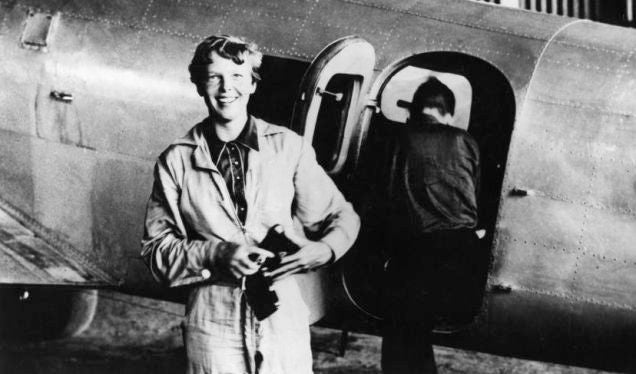
(Author unknown)
July 24, 1897 – The birth of Amelia Earhart. Born in Atchison, Kansas, Amelia Earhart holds a significant place in the annals of American aviation history, as she was not only a pioneering aviator but also a pioneer in the expansion of societal roles for women in general. Earhart took her first flying lessons in 1921, and set her first world altitude record the next year. In 1928, she was the first woman to cross the Atlantic by plane, albeit as a passenger, but made her own transatlantic solo flight in 1932, a feat for which she received the !!!error: Indecipherable SUB-paragraph formatting!!! . Earhart set numerous other flying records, but disappeared over the Pacific Ocean in 1937 with navigator !!!error: Indecipherable SUB-paragraph formatting!!! while attempting a circumnavigation of the globe. The mystery of her disappearance remains unsolved to this day.
!!! UNKNOWN CONTENT TYPE !!!
Connecting Flights
!!! UNKNOWN CONTENT TYPE !!!
!!! UNKNOWN CONTENT TYPE !!!
!!! UNKNOWN CONTENT TYPE !!!
!!! UNKNOWN CONTENT TYPE !!!
!!! UNKNOWN CONTENT TYPE !!!
If you enjoy these Aviation History posts, please let me know in the comments. And if you missed any of the past articles, you can find them all at
!!!error: Indecipherable SUB-paragraph formatting!!!
. You can also find more stories about aviation, aviators and airplane oddities at
!!!error: Indecipherable SUB-paragraph formatting!!!
.
!!! UNKNOWN CONTENT TYPE !!!
 CarsofFortLangley - Oppo Forever
> ttyymmnn
CarsofFortLangley - Oppo Forever
> ttyymmnn
07/24/2018 at 12:43 |
|
It’s still such a huge deal in Manitoba, mainly because people don’t go there often.
 Ash78, voting early and often
> ttyymmnn
Ash78, voting early and often
> ttyymmnn
07/24/2018 at 12:48 |
|
It always amazed me that pilots never trained much for full power outages. Seems like that would not be an extreme situation in a twin engine airliner. I mean, they still had full control and a basic concept of aerodynamics, which is a big plus compared to a lot of accidents where they lose hydraulics.
 RamblinRover Luxury-Yacht
> ttyymmnn
RamblinRover Luxury-Yacht
> ttyymmnn
07/24/2018 at 13:13 |
|
A
note: a Rickenbacker auto appears prominently in a first season episode of The Twilight Zone:
Mr. Bevis.
 user314
> ttyymmnn
user314
> ttyymmnn
07/24/2018 at 14:05 |
|

 Derpwagon
> ttyymmnn
Derpwagon
> ttyymmnn
07/24/2018 at 14:08 |
|
That Czech airplane is neat.
Oh, and as soon as I saw the top half of it, I knew it was the thunderscreech. What a hilarious plane.
Finally, F-4 Phantom. A truly sexy warjet.
 RacinBob
> ttyymmnn
RacinBob
> ttyymmnn
07/25/2018 at 08:59 |
|
I believe the story on the Gimli glider is they didn’t trust the fuel gauges so they used a “stick to measure fuel depth. Problem was that it was a metric meter stick and not a yard stick and the pilots didn’t realize that the fueler was giving the reading in centi meters instead of inches.....
 ttyymmnn
> RacinBob
ttyymmnn
> RacinBob
07/25/2018 at 09:10 |
|
I hadn’t heard the stick story. I’m not sure they could use a stick to measure the fuel in an aircraft like a 767, but either way, it’s a major screw up.
 RacinBob
> ttyymmnn
RacinBob
> ttyymmnn
07/25/2018 at 13:40 |
|
https://airlinegeeks.com/2018/07/23/remembering-the-gimli-glider-incident-on-its-35th-anniversary/
Co uld have been a meter stick or something else.....
“ The aircraft was fueled in Montreal with enough fuel to make it to Edmonton but left with an inoperative fuel quantity indication system. The faulty indication showed fuel levels as empty and a misunderstanding led the captain to believe that the flight was safe to fly with the gauges inoperative. In its place, a dipstick measurement was performed in both Montreal and Ottawa, with the data entered into the flight management system.”
!!! UNKNOWN CONTENT TYPE !!!
An investigation found that the engines failed due to fuel starvation, which was attributed to multiple factors. With the change to the metric system, the fuelers in Montreal loaded only half the necessary fuel for the flight to Edmonton.”
 ttyymmnn
> RacinBob
ttyymmnn
> RacinBob
07/25/2018 at 13:42 |
|
There ya go. Thanks.